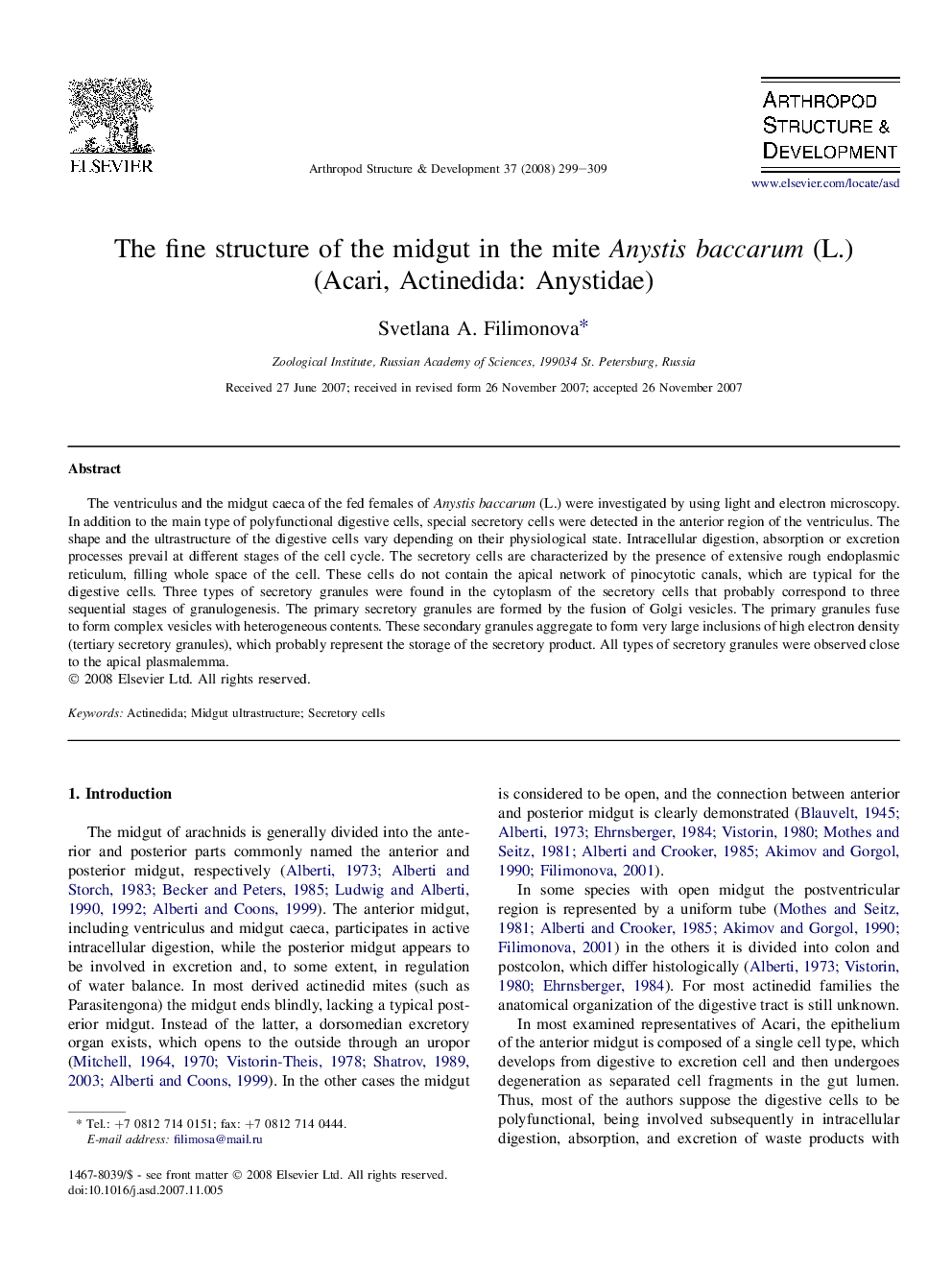| Article ID | Journal | Published Year | Pages | File Type |
|---|---|---|---|---|
| 2778939 | Arthropod Structure & Development | 2008 | 11 Pages |
The ventriculus and the midgut caeca of the fed females of Anystis baccarum (L.) were investigated by using light and electron microscopy. In addition to the main type of polyfunctional digestive cells, special secretory cells were detected in the anterior region of the ventriculus. The shape and the ultrastructure of the digestive cells vary depending on their physiological state. Intracellular digestion, absorption or excretion processes prevail at different stages of the cell cycle. The secretory cells are characterized by the presence of extensive rough endoplasmic reticulum, filling whole space of the cell. These cells do not contain the apical network of pinocytotic canals, which are typical for the digestive cells. Three types of secretory granules were found in the cytoplasm of the secretory cells that probably correspond to three sequential stages of granulogenesis. The primary secretory granules are formed by the fusion of Golgi vesicles. The primary granules fuse to form complex vesicles with heterogeneous contents. These secondary granules aggregate to form very large inclusions of high electron density (tertiary secretory granules), which probably represent the storage of the secretory product. All types of secretory granules were observed close to the apical plasmalemma.
